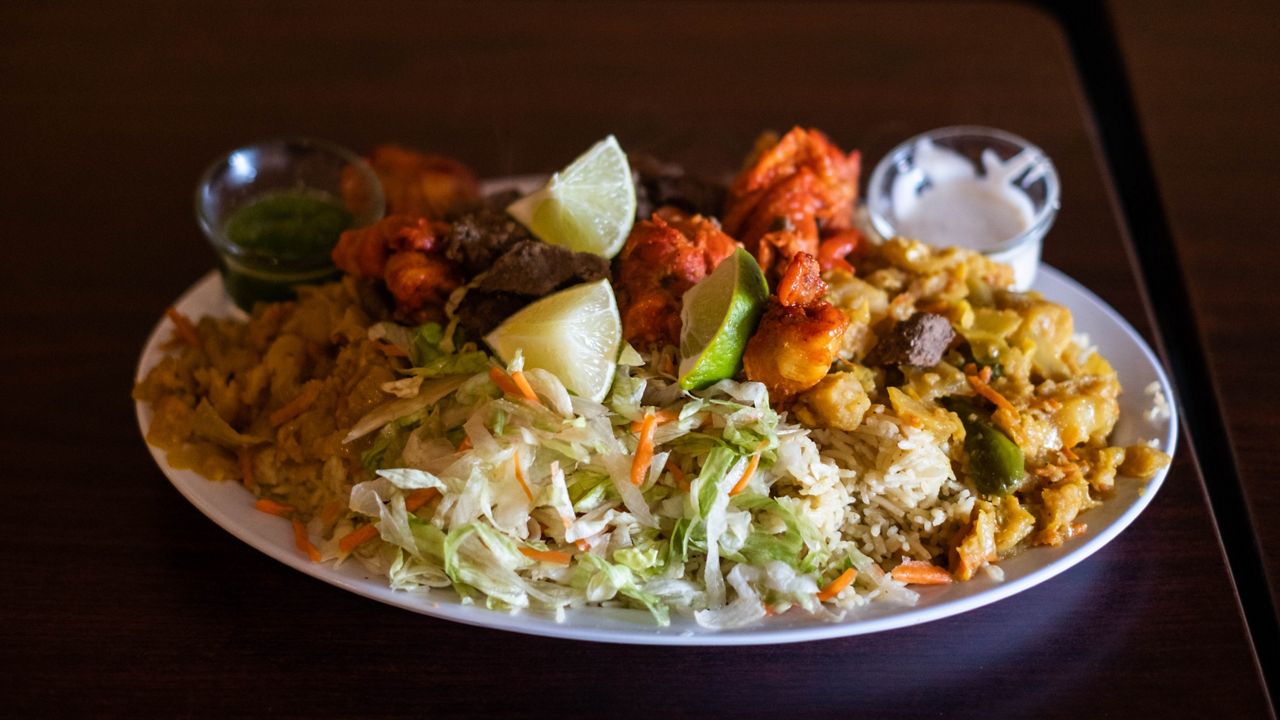Appreciating the Distinct Preferences and Tastes of Somali Gastronomy: a Journey With the Land of Spices and Saffron

Fragrant Flavors and Saffron
First, let's discover the abundant selection of aromatic spices and saffron that will certainly take your palate on a journey with Somali gastronomy. Somali food is understood for its vibrant and flavorful recipes, which are accomplished through the competent usage of fragrant seasonings. From cumin and coriander to cardamom and cinnamon, Somali food flaunts a large array of spices that add depth and intricacy to its meals. These fragrant flavors are used in both conventional and contemporary Somali dishes, producing a special and remarkable taste profile.
One of one of the most valued spices in Somali cuisine is saffron. Recognized for its dynamic shade and unique fragrance, saffron is usually utilized to boost and enhance the tastes of Somali recipes. Whether it's sprayed on rice pilaf, instilled in hot tea, or made use of in curries and stews, saffron adds a touch of deluxe to Somali gastronomy.
In enhancement to their culinary importance, these aromatic spices and saffron likewise hold social value in Somali cuisine. They are used in standard events and celebrations, representing heat, hospitality, and the richness of Somali society.
Conventional Somali Dishes
Explore the delicious variety of conventional Somali meals that will move you to a globe of vibrant flavors and cultural splendor. Somali food is a wonderful combination of African, Center Eastern, and Indian influences, resulting in an unique culinary experience. One famous meal is the Somali rice, referred to as "Bariis." Aromatic basmati rice is cooked with aromatic flavors, such as cardamom, cinnamon, and cloves, offering it a warm and inviting fragrance. An additional must-try meal is "Suqaar," a stir-fry of tenderized meat or hen, onions, garlic, and an assortment of flavors. The meat is cooked up until it is delicious and bursting with taste. For those looking for a vegetarian option, "Iskudhehkaris" is a fascinating option. This dish features a mix of potatoes, carrots, peas, and rice, prepared in a flavorful tomato-based sauce. Somali food likewise flaunts tasty flatbreads, such as "Canjeero" and "Injera," which are perfect for scooping up sauces and stews. Finally, no Somali meal is full without a cup of spiced tea, referred to as "Shaah." It is made with black tea leaves, cardamom skins, cinnamon sticks, and a touch of cloves, creating a soothing and cozy beverage. Start a cooking experience and appreciate the varied and rich tastes of traditional Somali meals.
Influences From Arab and Indian Cuisine
Immerse yourself in the vivid flavors of Somali gastronomy as you uncover the abundant influences from Arab and Indian food. Somali food has been shaped by centuries of profession and social exchange with Arab and Indian sellers. These impacts can be seen in the diverse flavors, flavors, and food preparation strategies utilized in Somali meals.
Arab food has actually had a substantial effect on Somali gastronomy. Somali recipes often include active ingredients such as cardamom, cinnamon, cloves, and saffron that are typically utilized in Arab cooking. The usage of these seasonings includes depth and complexity to Somali dishes, developing a special taste profile.
Indian food has likewise left its mark on Somali gastronomy. Somali meals commonly include flavors such as turmeric extract, coriander, and cumin, which are typically used in Indian food preparation. These flavors not just include taste yet likewise offer Somali meals their vibrant shades. The usage of turmeric gives Somali rice meals an intense yellow hue.
Along with seasonings, Arab and Indian cooking strategies have actually likewise influenced Somali cooking. The concept of slow cooking or marinading meat in spices before barbecuing, recognized as "maraq," is thought to have originated from Arab food. The use of flatbreads, like "canjeero," which is similar to Indian dosa, can be mapped back to Indian culinary traditions.
The influences from Arab and Indian cuisine have actually included depth and intricacy to Somali gastronomy. These impacts have not only formed the flavors and active ingredients utilized in Somali dishes yet have additionally added to the cultural identity of Somali cuisine. So, as you embark on your culinary journey via Somali gastronomy, be prepared to relish the distinct preferences and flavors that have been affected by Arab and Indian food.

Discovering Regional Flavors
As you delve into the varied cooking landscape of Somali gastronomy, a multitude of local tastes awaits your taste. Each region in Somalia boasts its own unique ingredients, cooking strategies, and taste mixes that add depth and variety to the nation's food.
In the northern area of Somalia, you will certainly discover tastes affected by the nomadic way of living and proximity to the Gulf of Aden. Here, camel meat takes spotlight, prepared in a selection of means, consisting of marination in a selection of seasonings and slow-cooking. The usage of dried out fruits, such as figs and days, boosts the splendor of meals, while the coastal influence brings an abundance of seafood to the table.
In the main area, the food is defined by hearty dishes that reflect the farming heritage of the location. Millet and sorghum are essential grains, utilized to make breads like injera and canjeero. Stews made with goat meat, vegetables, and aromatic spices like cumin and coriander are typical and offer a burst of tastes.
Moving in the direction of the southerly region, you will come across a combination of tastes influenced by the Bantu people and the Indian Sea trade routes. Coconut milk, exotic fruits, and great smelling flavors like cardamom and cloves are used freely in meals, creating a vivid and unique taste account.
Exploring regional tastes in Somali gastronomy permits you to experience the diverse social influences that have actually formed the country's cuisine. From the nomadic tastes of the north to the farming robustness of the central region and the seaside fusion click here now of the south, each bite informs a tale of tradition, heritage, and the lively tapestry of Somali gastronomy.
Exquisite Desserts and Beverages
Delight in the alluring tastes webpage of Somali gastronomy through a wonderful range of treats and drinks that display the rich cultural heritage of the country. Somali treats are a real delight for the detects, supplying an excellent blend of sweetness and exotic tastes. One prominent treat is Kac Kac, a deep-fried pastry made with flour, sugar, and cardamom.
When it concerns beverages, Somali food provides a revitalizing option of drinks that match the tastes of the desserts. A must-try is Shaah, a typical spiced tea made with black tea leaves, cardamom, cloves, and cinnamon. The aromatic mix of spices produces a reassuring and cozy beverage that is often taken pleasure in with a side of dates or biscuits. For an extra cooling option, Somali individuals enjoy Qaxwo, a rejuvenating yogurt-based beverage flavored with fruits such as strawberry, banana, or mango. Its luscious and zesty taste offers an ideal balance to the sweetness of the desserts (Somali food).
Conclusion
So next time you're in the mood to discover new flavors and flavors, make certain to add Somali gastronomy to your listing. From the fragrant spices and saffron to the conventional meals influenced by Arab and Indian foods, there is something special and delicious for everyone to relish.
From fragrant spices to standard meals affected by Arab and Indian food, Somali gastronomy is a fascinating blend of flavors. These influences can be seen in the diverse seasonings, tastes, and food preparation techniques made use of in Somali dishes.

These flavors not only add taste yet additionally provide Somali recipes their vibrant shades (Somali food). These influences have not only formed the tastes and ingredients made use of discover this info here in Somali recipes however have likewise added to the cultural identity of Somali cuisine